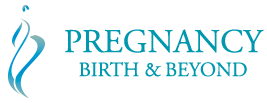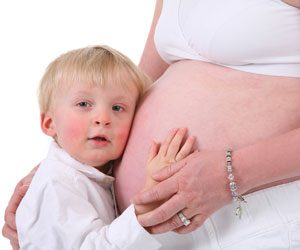Acupuncture Induction for Post Date is enjoying increasing popularity as women with uncomplicated pregnancies seek to avoid conventional medical induction, the imposition of medical timeframes, and the cascade of interventions that often follow.
Acupuncture induction is safe and effective and works harmoniously with the delicate hormonal balance of pregnancy to promote labour.
TCM practitioners will never perform an internal, vaginal examination under any circumstance. The primary method of collecting TCM diagnostic information is by asking clinical questions. Another is through palpating the radial pulse and inspecting the tongue.
While acupuncture is very effective it works according to a different, less-aggressive philosophy to Western Medicine. Therefore, a specific timeframe for the outcome can be difficult to guarantee.
In order to induce labour using acupuncture, a woman’s energy needs to be invigorated.
It needs to be moved downwards and outwards to allow her baby to be born. The baby also needs to be stirred from a relatively restful, nourishing, restorative (Yin) state to an active, moving, dynamic (Yang) state. This process can naturally take time depending on the readiness of both mother and baby. Generally, if a baby is mature, acupuncture will assist in promoting labour. If the baby is not ready, then induction will be difficult to achieve.
It is difficult to comment on what women can reasonably expect after an acupuncture induction treatment as no two pregnancies are ever the same. Also, no two women come to treatment at the same stage of their pregnancy.
From anecdotal experience, acupuncture is very effective in inducing women who are past their due dates. This is especially if they are prepared to commit to daily sessions and allow adequate time before medical induction is scheduled. I find that women will often progress into labour after their first treatment, but more commonly after 2-3 treatments. If acupuncture is going to be effective, it rarely requires 4 treatments.
It is prudent, therefore, to advise women to commence daily acupuncture induction treatment at least 4 days prior to their medically scheduled induction. This ensures a reasonable opportunity for the treatment to take full effect.
Current Research In 2008 the Cochrane Collaboration reviewed three overseas trials of 212 women comparing acupuncture used for third trimester cervical ripening/labour induction with a placebo/no treatment or other methods. The review of two of these trials suggested that women receiving acupuncture required less use of other induction methods compared with women receiving standard care alone. The Collaboration noted that the studies were of moderate methodological quality, included small numbers of subjects and were inadequately reported; in other words, not of high quality. The authors concluded that acupuncture had no adverse side effects and that there was a need for a well designed, randomised controlled trial to evaluate the role of acupuncture to induce labour, and for trials to assess clinically meaningful outcomes.
If a woman is showing signs of pre-labour rumblings it is highly likely that she will progress into labour post-treatment. Examples are cramping lower back pain, mild downward bearing sensation or diffuse abdominal tightening.
Some women will have little sensation during the treatment.
On the other hand, others experience downward movement, urinary urge and abdominal tightening during and up to 5 hours post-treatment. In any event, a woman is best advised to go straight home after treatment. A woman needs to remain quiet and allow her body to take deep rest. This will be in preparation for the energy requirements of labour.
Induction treatment can also be considered to stimulate contractions in women experiencing spurious labour or those whose membranes have ruptured but labour has not spontaneously begun. If successful, the risk of infection is reduced and the use of prophylactic antibiotics may be avoided.
Induction of labour using Chinese herbal medicine
Chinese herbal medicine can be utilised by women who dislike the thought and experience of needling and are comfortable ingesting herbs while pregnant or those who are seeking to enhance the action of their acupuncture induction.
Prescribed by trained TCM professionals, Chinese herbal medicine is perfectly safe for the purpose of induction.
At the time of writing, there are no known documented adverse interactions between herbs and the medical drugs used during labour.
The action of the herbal formulas used for induction treatment is to move and invigorate blood circulation to awaken and dislodge the foetus, descend energy, and nourish blood to help dilate the cervix. These types of formulas contain some herbs that are otherwise contraindicated during pregnancy because of their action to promote early labour/miscarriage, not because they pose any life-threatening risk to mother or baby. The thought behind using these herbs for induction is that when a woman is past her due date she is no longer pregnant and therefore no contraindication applies.
Women are also best advised to commence herbal induction treatment. This is up to 4 days in advance of a scheduled medical induction. It is common for women to experience lower abdominal tightening. They also experience sensations ranging from mild cramping to sharper, stabbing period-like vaginal pain shortly after consuming each dose of herbal medicine. This is a good sign that the formula is having an effect and labour is imminent.
While still an artificial method, the use of TCM to induce labour is a safe, natural, viable alternative to Western medical induction for post-term babies and well worth expectant mothers considering should they wish to avoid the possibility of medical induction. It might also be considered in cases of spurious labour or ruptured membranes with non-progressive labour. It is crucial, however, that women be advised to allow adequate time for treatment to take effect.
© January 2009 Karen Pohlner
Published 2009


Recent Comments